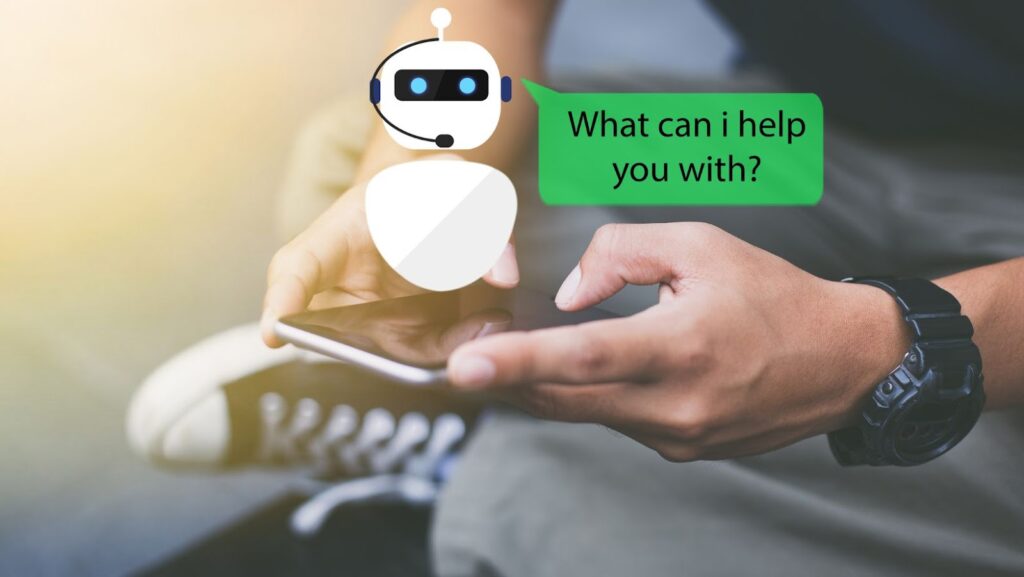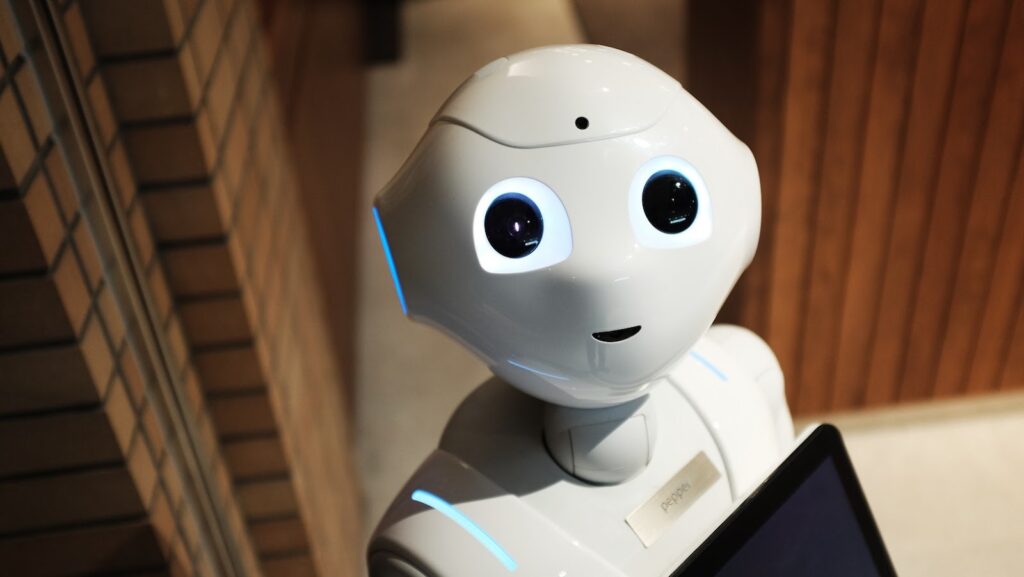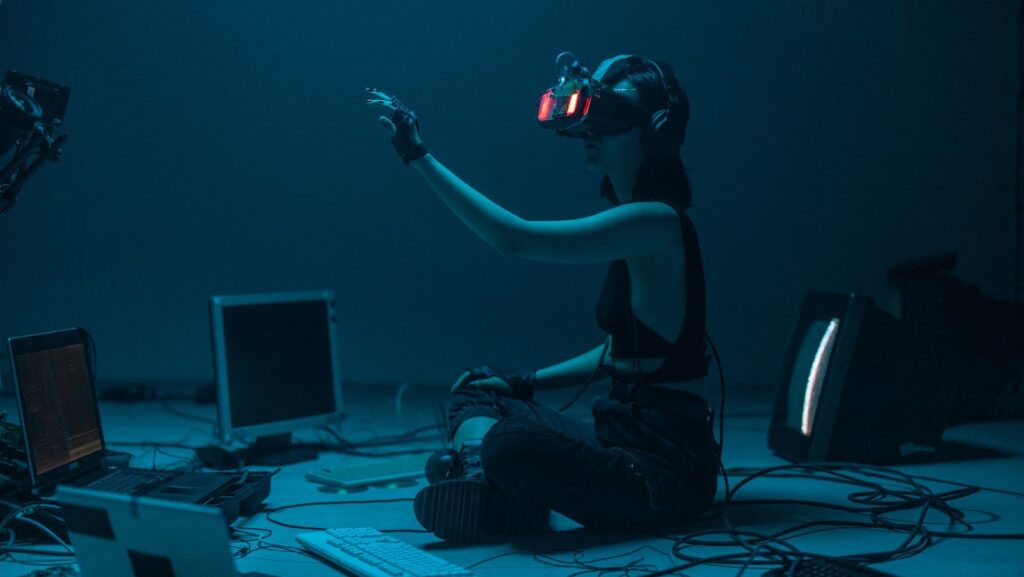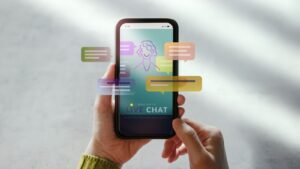The History of Chatbots

Chatbots have come a long way since their creation in the 1960s. The first-ever chatbot, Eliza, was created in 1966 by Joseph Weizenbaum, a computer scientist at MIT. Eliza used natural language processing techniques to simulate conversation and could respond to user input based on pre-programmed scripts. However, the term ‘chatbot’ was not coined until the 1990s, with the creation of A.L.I.C.E by Dr. Richard Wallace in 1995.
From there, chatbots continued to develop, with advancements in artificial intelligence and machine learning leading to more sophisticated and nuanced chatbots capable of responding to user queries and adapting to user behavior. Today, chatbots are widely used across industries, from customer service and healthcare to education and finance, helping to streamline processes, improve efficiency, and enhance the user experience.
What is a Chatbot?
Chatbots have been around for centuries, even before the advent of technology. The earliest chatbots were used to achieve a common goal: to communicate with humans. In 1950, Alan Turing wrote a famous paper on the topic of machine intelligence, in which he proposed a method of testing the capability of computers to act like a human. This paved the way for the development of chatbot technology. This article will look at the origins of chatbots, the development of the technology, and how bots have evolved in recent years.
Introduction to Chatbots
Chatbots are computer programs designed to simulate human conversation with users. Despite being a recent hot topic, the concept of chatbots dates back to the early 1960s, when the first ELIZA program was created to mimic a psychotherapist’s responses. Since then, chatbots have evolved and become increasingly sophisticated, with advancements in natural language processing (NLP) and machine learning algorithms.
In the 1990s, ALICE was created, which was one of the first chatbots with some pre-defined scripts. Simultaneously, IRC chatbots started appearing more and more frequently, with developers making them more interactive and able to perform multiple tasks. Today, chatbots have advanced to the point where they can analyze large amounts of data, interpret complex queries, and even understand various languages. However, natural language processing and accurate interpretation of context still remain a challenge, and researchers continue to work to improve chatbot technology to create more seamless and natural interactions with users.
First Chatbot ‘Eliza’
Eliza, created in the mid-1960s by Joseph Weizenbaum, is considered the first chatbot ever developed, marking the beginning of the history of chatbots. Eliza used a simple pattern-matching algorithm to simulate a psychotherapist, which could converse with human users in natural language. Even with its rudimentary technology and limited capabilities, Eliza was received with unexpected enthusiasm and can be considered a ground-breaking precursor to the advancements in chatbots we see today.

Since then, chatbots have evolved to serve many purposes in various fields like customer support, e-commerce, and healthcare. They have become indispensable tools for companies, organizations, and individuals alike, continually advancing and improving in functionality and sophistication. It is no wonder that chatbots are becoming increasingly popular as they can save time, provide customer assistance, reduce workload, and enhance user experience.
Alan Turing and the Turing Test
The Turing test was a method proposed by Alan Turing to determine whether a machine can exhibit human-like intelligence, and has played a significant role in the early beginnings of chatbots and the history of artificial intelligence. In his 1950 paper, “Computing Machinery and Intelligence,” Turing proposed that a machine could be considered “intelligent” if its responses in a natural language conversation were indistinguishable from those of a human.
The Turing test has been used as a standard for evaluating the conversational abilities of chatbots and other AI agents, and has driven the development of natural language processing and machine learning technology over the years. While chatbots have come a long way since Turing’s time, the Turing test remains a fundamental concept in the development and assessment of conversational AI.
Advancements in Chatbot technology
Chatbots have come a long way since they first appeared. Developments in Artificial Intelligence (AI) and Natural Language Processing (NLP) technologies have enabled chatbots to understand and respond to humans in more natural ways. This article will discuss the history of chatbot technology and its advancements over the years.
The 1990s: Interactive Voice Response (IVR) Systems
The 1990s saw the rise of Interactive Voice Response (IVR) systems, which became a predecessor for modern-day chatbots. IVR systems were designed to interact with customers over a telephone line and route them to the appropriate department or provide them with pre-recorded information. Over time, IVR systems evolved to allow customers to input information using their voice or the touch-tone keypad.
This paved the way for chatbot technology, which uses Natural Language Processing (NLP) and Artificial Intelligence (AI) to provide a more personalized and natural interaction with customers. Today, sophisticated chatbots can answer complex queries, provide recommendations, complete transactions, and even deploy machine learning to continuously improve their responses.
The 2000s: Smarter, More Interactive Chatbots
Chatbot technology has come a long way since its inception, with the 2000s marking a significant shift towards smarter, more interactive chatbots. In the early 2000s, chatbots primarily used rule-based systems, which were limited in their ability to understand and respond to user input. However, advancements in natural language processing (NLP) and artificial intelligence (AI) allowed for more sophisticated chatbots that could learn and adapt to user behavior.
One example of a more interactive chatbot from the 2000s is SmarterChild, which was popular on instant messaging platforms such as AOL Instant Messenger and MSN Messenger. SmarterChild was a virtual assistant that could answer questions, play games, and perform other tasks based on user input. Today, AI-driven chatbots continue to evolve, with the ability to understand and process complex inputs, learn from user interactions, and even recognize emotions. As a result, chatbots are becoming increasingly commonplace in customer service, healthcare, and other industries.
Apple’s Siri and the Rise of Voice-Activated Assistants
Apple’s Siri was a major milestone in the advancement of voice-activated assistants and is now considered one of the most popular personal digital assistants available. Chatbots, on the other hand, have a longer history of development, dating back to the 1960s. The first chatbot, ELIZA, was designed to imitate human conversation and offered counseling-like interactions to its users.
Since the inception of ELIZA, chatbots have come a long way, incorporating advancements in natural language processing, machine learning, and artificial intelligence. Today, chatbots are used in a variety of settings, including customer service, marketing, and even mental health counseling. As technology continues to advance, it’s likely that chatbots and other voice-activated assistants will become even more integrated into our daily lives, offering us unprecedented levels of convenience and efficiency.
Chatbots in Popular Culture
Chatbots have been featured in many of the most popular television shows, films, and books of the past few decades. From the iconic HAL 9000 from Stanley Kubrick’s sci-fi classic, “2001 A Space Odyssey,” to the smart home AI systems in the Pixar hit, “Inside Out,” chatbots have become a part of popular culture. Let’s take a closer look at how chatbots have been used in popular culture throughout the years.
Chatbots in Films and TV
Chatbots have made their way into popular culture, being featured in films and TV shows throughout the years. From sci-fi classics like 2001: A Space Odyssey to modern hits like Westworld, chatbots have played a prominent role in many storylines. The first-ever film to feature a chatbot was the 1968 sci-fi classic, 2001: A Space Odyssey. The chatbot, named HAL 9000, was a sentient computer program that controlled the spacecraft and interacted with the crew.
Since then, chatbots have become a popular trope in films and TV shows, often used to explore the themes of artificial intelligence and humanity. Some notable mentions include Robot from Lost in Space, Samantha from Her, and Dolores from Westworld. With the rise of chatbot technology in recent years, it’s no surprise that they have become increasingly prominent in popular culture. As our relationship with AI continues to evolve, we can expect to see more and more chatbots featured in films and TV shows.
Chatbots in Video Games
Chatbots have become an integral part of many video games, helping players to interact with the game world and complete quests. The benefits of using chatbots in video games include faster response times, personalized gameplay experiences, and the ability to scale interactions with large numbers of players. Chatbots have come a long way since their inception in the 1960s, where they were initially used for academic research purposes. Over the years, they have been integrated into various industries, including healthcare, customer service, and online gaming.
With the advancements in artificial intelligence and natural language processing, chatbots have become more sophisticated, allowing for more complex and intuitive interactions with players in video games. Chatbots also offer game developers the ability to gather valuable insights into player behavior and preferences, helping them improve game design and user experience. Pro Tip: As chatbots continue to evolve, keep an eye out for new and innovative ways to incorporate them into your gaming experience.
Chatbots in Modern Music
Chatbots have become increasingly prevalent in the modern music industry, providing a personalized and interactive experience for fans. By using AI-powered chatbots, music artists can engage with their fans on a one-to-one basis, providing exclusive updates and promotions. This technology also allows users to customize their listening experiences based on preferences such as mood or genre.
However, the use of chatbots in the entertainment industry is not new. The earliest known chatbot, ELIZA, was created in the 1960s as a computer program to simulate human conversation. Since then, chatbots have evolved to become more advanced and interactive, leading to their current widespread adoption. As chatbots continue to evolve in popularity, we can only expect their use to expand to other facets of popular culture.
Modern Day Chatbots
In the modern computing era, Chatbots are increasingly being used to improve customer service and user experiences. These artificial intelligence solutions are deployed on digital devices and platforms to automate conversations with human users. Let’s take a look at the history of chatbots, and how they’ve evolved over the past few years.
Chatbots for Customer Service
Chatbots have revolutionized customer service by providing quick and efficient solutions to customers’ queries. They have become increasingly popular among businesses due to their 24/7 availability and cost-effectiveness. However, the concept of chatbots is not a new one; in fact, chatbots have a long history. The origins of chatbots can be traced back to the 1960s, with the development of ELIZA, a computer program that simulated human conversation by mimicking a psychotherapist.

Since then, chatbots have evolved significantly, with advancements in artificial intelligence and natural language processing. Today’s modern-day chatbots can understand and interpret human language, respond to queries, and even perform transactions. With the increasing demand for customer service, businesses have realized the importance of implementing chatbots. The adoption of chatbots has led to improved customer satisfaction and a reduction in response time.
Chatbots for Healthcare
Chatbots are becoming increasingly popular in the healthcare industry, with the potential to improve patient care delivery and reduce healthcare costs. Chatbots have come a long way since their inception in the 1960s, and much of their history is intertwined with the development of machine learning and artificial intelligence. The first chatbot to gain mainstream attention was ELIZA, developed in the mid-1960s by MIT professor Joseph Weizenbaum. ELIZA used pattern recognition and natural language processing to simulate conversation with humans.
Since then, chatbots have been used in a variety of industries and applications, including healthcare. Healthcare chatbots can help patients book appointments, manage medications, triage symptoms, and receive personalized health information. They can also assist clinicians by providing decision support and automating administrative tasks. With advancements in technology and increasing demand for telehealth, chatbots are poised to become an integral part of how healthcare is delivered in the 21st century.
Chatbots for Finance and Banking
This heading seems to have a mismatch of topics, so I will address each one separately. For the first part “Chatbots for finance and banking,” chatbots have been increasingly used in finance and banking to improve customer service and engagement. Chatbots can efficiently perform routine tasks, such as answering basic FAQs, and can even conduct simple transactions, such as transferring funds or checking account balances, without the need for human intervention.
This has resulted in faster response times, increased customer satisfaction, and cost savings for banks and financial institutions. For the second part “Modern day chatbots – The history of chatbots,” chatbots have been around since the 1960s, with the first chatbot called ELIZA, created in 1966. Over the years, chatbots have advanced in their capabilities and sophistication, incorporating machine learning, natural language processing, and artificial intelligence. Today, chatbots are used in various industries, including customer service, healthcare, e-commerce, and education, among others.
The Future of Chatbots
Chatbots are increasingly becoming prevalent in our lives. From interacting with customers through an app to helping users navigate a website, they are becoming ubiquitous in our lives. The potential of chatbots is vast and is yet to be fully realized. As the technology of chatbots continues to evolve, let’s take a look at the future of chatbots and what it could mean for our lives.
Advancements in AI and Machine Learning
Advancements in AI and machine learning have revolutionized the world of chatbots, making them more intelligent and responsive to user needs. These technologies allow chatbots to understand and interpret natural language, personalize responses, and learn from previous conversations to improve future interactions. The history of chatbots dates back to the 1960s when the first iteration, ELIZA, was created. ELIZA was a simple chatbot program that used pattern matching to simulate human-like conversations. Over the years, chatbots have evolved significantly, with the latest developments being AI neural networks, natural language processing, and machine learning.
These advancements have made chatbots more human-like in their interactions, providing customers with more personalized and responsive experiences. In the future, chatbots are likely to become even more advanced, potentially becoming fully autonomous and serving as virtual assistants to users in various industries such as healthcare, finance, and customer service.
Chatbots in Smart Homes
Chatbots are revolutionizing the way we interact with smart homes. In today’s world, chatbots have become a vital part of home automation because of their capability to seamlessly communicate with smart devices and appliances. Using chatbots, users can conveniently control lights, temperature, and other smart devices with natural language input. The history of chatbots dates back to 1966 when the first chatbot ELIZA was developed. It used pattern recognition techniques to simulate human conversation by responding to text-based prompts.
Since then, chatbots have evolved to support voice-based inputs and leverage artificial intelligence and machine learning to improve their conversational abilities. As chatbot technology continues to advance, we can expect to see more intelligent and intuitive chatbots that can understand natural language and provide more helpful responses. The future of chatbots is exciting, and we can expect to see them play a significant role in simplifying our interactions with smart homes in the coming years.
Chatbots in Virtual and Augmented Reality
Chatbots are already making waves in the virtual and augmented reality space, enabling a whole new level of engagement between consumers and brands. Virtual and augmented reality technologies create more immersive environments, and chatbots are being designed to match that level of immersion. Chatbots are designed to provide natural language processing (NLP) capabilities and serve as a communication gateway for the end-users.
In terms of the history of chatbots, the first chatbot was created in 1966, called ELIZA, which used a primitive algorithm to simulate a human conversation. The development of Siri in 2011 and Alexa in 2014 shows that the chatbots had come a long way since ELIZA and were capable of advanced NLP and machine learning capabilities. As for chatbots in virtual and augmented reality, their future looks bright, as they offer exciting opportunities for immersive and natural interactions between humans and machines.






